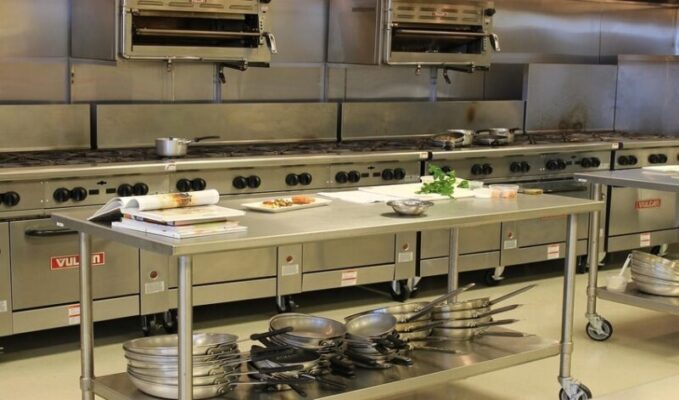
Cloud Kitchens: How Technology is Revolutionizing the Restaurant Industry
Last updated on January 4th, 2024 at 04:13 pm
What is a Cloud Kitchen? A cloud kitchen is an open-source, chef-designed methodology for restaurant kitchens to use technology in order to increase efficiency and profitability. As the name implies, it harnesses the power of the internet and all its resources to create a profitable ecosystem. This blog post aims to delve into what cloud kitchens are, how they work, and why they are revolutionizing the restaurant industry.
Technology Saves Time and Money
The idea of cloud kitchens is not new and has existed for decades, but the reasons behind their existence have changed. In the 1990s, restaurants began to adopt the concept in order to save space by centralizing cooking equipment like ovens and ranges. Fast forward 20 years later and now technology has advanced exponentially so that restaurant owners can use this same system for the same purpose. Deliveroo launched Deliveroo dark kitchens in London and hence saves time and money.
Completes Tasks More Efficiently
Cloud kitchens use technology to complete tasks more efficiently than a traditional kitchen could ever hope to achieve on its own. This includes automation of cooking processes, elimination of wait times at restaurants, improved customer service through an online ordering system, delivery services that cater food right when it is needed, and improved inventory management.
Technology allows Mobile Functionality
Mobile order functionality is one of the most common tasks that a cloud kitchen will fulfill in its day-to-day operations. Mobile ordering can be done through any number of channels including mobile apps, websites, or even text messages – all from within an eatery’s own location. The “just in time” nature of this service means that customers can choose to order ahead and pick up their food when they’re ready.
Allows Chain Restaurants to Operate at One Central Location
More and more restaurants, both chains and smaller independents are opting to outsource their kitchen functions. These “cloud kitchens” allow food preparation for a single restaurant or chain of restaurants to be completed in one centralized location – typically in an industrial park away from residential areas. This allows the restaurant to focus on their specialty, while the cloud kitchen handles everything else.
Leads to more Customer satisfaction
Cloud kitchens can also use advanced analytics to improve customer satisfaction, even if the location is not a restaurant. If an eatery finds it hard for people with disabilities or other special needs to find what they need in their store, the cloud kitchen can use information like this to adjust their inventory in order to help cater to these customers.
Technology Allows Digital Ordering
Some of the most innovative and recent innovations from cloud kitchens include new forms of kiosks that allow for more digital ordering at restaurants without requiring a waiter or waitress. This allows people who are waiting for food to enjoy other aspects of the restaurant without having to wait for their food.
Allows Robot in Recipe Preparation
Another recent innovation is using a robotic arm that can place ingredients on top of one another in order to create different types of dishes and sauces that would normally require an expert chef or cook. This allows people with limited kitchen space but want access to quick, easy cooking recipes that are guaranteed to taste good.
Technology Facilitates Self Service
Lastly, the newest innovation that is being seen in many restaurants is computerized vending machines to place your food order and pick it up when it’s ready for you without having to wait at a counter or table. This has become popular with people who want fast service and don’t have much time on their hands.
How do these changes affect smaller restaurants?
Cloud kitchens are changing what it means for a small business owner to specialize in food preparation. As larger chains and franchises take over the industry with centralized locations like this, entrepreneurs who have regional tastes or preferences find it difficult to compete.
Conclusion
There are many changes in the restaurant industry that will affect all aspects of it, and these new innovations have given customers more options for what they want to eat. This is a great thing because people can now be selective about their choices without feeling pressured or limited by location. Technology has changed how we do everything–including eating.
Read Dive is a leading technology blog focusing on different domains like Blockchain, AI, Chatbot, Fintech, Health Tech, Software Development and Testing. For guest blogging, please feel free to contact at readdive@gmail.com.
